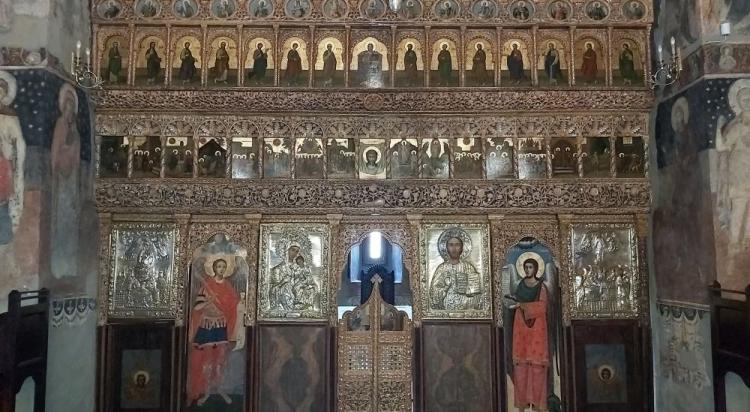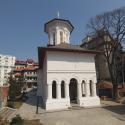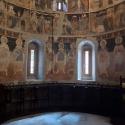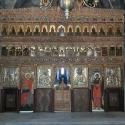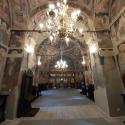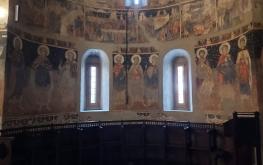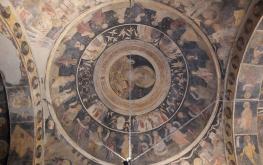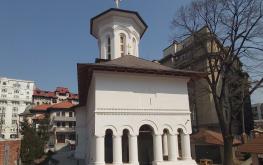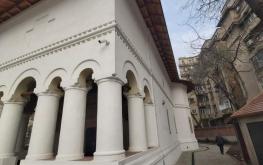The iconostasis of the sculpted and gilded wooden church is remarkable, even though the original gold foil and polychromia were almost completely destroyed as a result of interventions over time. It was worked in the Brâncovenescu style around 1705. The monumentality of the iconostasis is given, on the one hand, by its remarkable dimensions, height of approx. 5 m and width of approx. 5.6 m, and on the other hand by its vertical composition, from carved registers that traditionally alternate with rows of icons, the entire construction being crowned by Trimofor - the Cross of Jesus Crucified, and by the two Calvary Scene icons, representing Mary Mother of God and St. John the Theologian with the original form and decoration from 1705.
According to the classic period of Brâncovenesc style, the sculpture of iconostasis is executed in flat relief - meplat -, with gilded vegetable motifs, specific to Brâncovenesc decorative repertoire: twisted tendrils, flowers and leaves of acanthus, clover, oak, and fleurons.
Royal icons were worked in academic style and painted in the 19th century, probably in 1843. From the same period also dates the re-painting of the Cross of the iconostasis with Jesus Crucified and the two Calvary Scene icons, Mary Mother of God and St. John the Theologian. Great feasts icons and apostle icons are painted after 1944 by painter I. Bogărescu.


